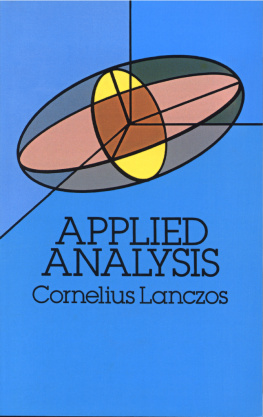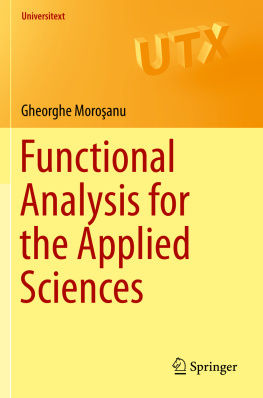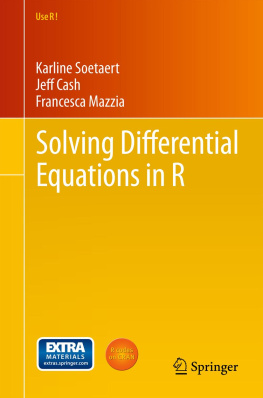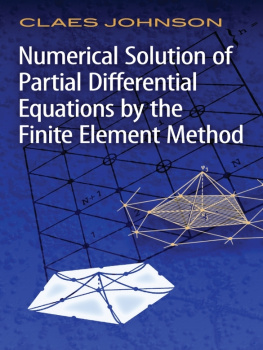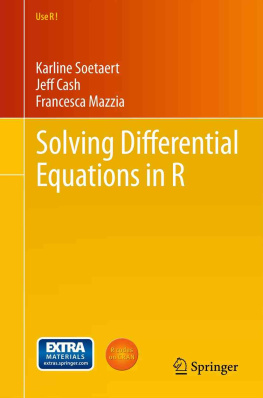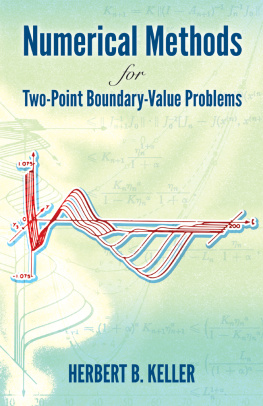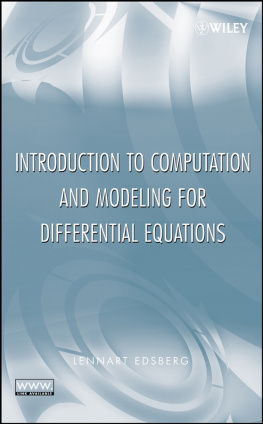APPLIED ANALYSIS
Cornelius Lanczos

DOVER PUBLICATIONS INC.
New York
This Dover edition, first published in 1988, is an unabridged and unaltered republication of the work first published by Prentice-Hall, Inc., Englewood Cliffs, New Jersey, in 1956.
Library of Congress Cataloging-in-Publication Data
Lanczos, Cornelius, 1893
Applied analysis / Cornelius Lanczos.
p. cm.
Reprint. Originally published: Englewood Cliffs, N.J. :Prentice-Hall, 1956.
Bibliography: p.
Includes index.
ISBN 0-486-65656-X (pbk.)
1.Mathematical analysis. 2. Mathematical physics. 1.Title.
88-3961
CIP
Manufactured in the United States by Courier Corporation
65656X06
www.doverpublications.com
To the Memory of the Six Million
Who Died for the Kiddush Hashem
PREFACE
FOR MANY YEARS the author has been engaged in studies of those fields of mathematical analysis that are of primary concern to the engineer and the physicist. That this area of workable mathematics did not receive the same attention during the 19th century as did the classical fields of analysis is perhaps the result of a historical misunderstanding. Until the time of Gauss and Legendre the workable methods of analysis received the closest attention of the best mathematicians. The brilliant discovery of the theory of limits changed the emphasis. Thenceforth it was considered satisfactory to design infinite approximation processes by which the validity of certain analytical results could be established, irrespective of whether the process used were feasible or not for a given problem.
It was then that the gradual separation of pure and applied mathematics occurred until we now have the pure analyst, who pursues his ideas in a world of purely theoretical constructions, and the numerical analyst, who translates the processes of analysis into machine operations.
In actual fact there is a large area between the two, which is not less analytical than the analysis of infinite processes but devoted to a different branch of analysis, namely, the analysis of finite algorithms. Here our objective is the analysis and design of finite processes which approximate the solution of an analytical problem. To design procedures which will effectively minimize the error in a small number of steps and which will estimate the error with sufficient accuracy is not a matter of practical interest only, but a matter of scientific interest as well. This book is largely devoted to such problems.
A few remarks concerning the manner of presentation may not be out of place. The author is not in favor of sacrificing rigor under the disguise that the applied scientist is interested only in the results and not in the more or less intricate procedures which lead to those results. The concepts and statements of mathematics are sharp and uncompromising and any sloppy presentation of a mathematical theorem disqualifies the formulation and throws doubt on the claimed result. It seems permissible, however, to state and prove a theorem under less exacting conditions than those in which the pure analyst is interested, if the gain achieved by this confinement is that the methods and results of mathematical investigations become presentable to the student of physics or scientific engineering in a language which is not overly strange to him. Furthermore, the author has the notion that mathematical formulas have their secret life, behind their Golem-like appearance. To bring out the secret life of mathematical relations by an occasional narrative digression does not appear to him a profanation of the sacred rituals of formal analysis but merely an attempt to a more integrated way of understanding. The reader who has to struggle through a maze of lemmas, corollaries, and theorems, can easily get lost in formalistic details, to the detriment of the essential elements of the results obtained. By keeping his mind on the principal points he gains in depth, although he may lose in details. The loss is not serious, however, since any reader equipped with the elementary tools of algebra and calculus can easily interpolate the missing details. It is a well-known experience that the only truly enjoyable and profitable way of studying mathematics is the method of filling- in details by ones own efforts. This additional work, the author hopes, will stir the readers imagination and may easily lead to stimulating discussions and further explorations, on both the university and the research levels.
That a book of this nature cannot exhaust the subject without becoming unduly bulky, goes without saying. The broad subject of boundary-value problems, together with the theory of integral equations, had to be omitted, due to lack of space. But it is perhaps no exaggeration to say that the topics considered in each chapter are encountered almost daily by the engineer and physicist. A brief description of each chapter follows.
. Algebraic Equations. The search for the roots of an algebraic equation is frequently encountered in vibration and flutter problems and in problems of static and dynamic stability. Some useful computing techniques, based on the movable strip method, are discussed. The Bernoulli method with all its ramifications plays the central role, but the scanning of the unit circle for the separation of complex roots of nearly equal magnitude and the method of reciprocal radii for stability questions are likewise of interest.
. Matrices and Eigenvalue Problems. This chapter is devoted to a systematic development of the properties of matrices, with particular emphasis on those features which are most frequently encountered in industrial research.
. Large-Scale Linear Systems. The advent of the electronic computer brings the iterative techniques for the solution of complicated boundary value problems and vibration problems into the foreground. This leads at once to the investigation of polynomial operations with matrices. While the general case of complex eigenvalues could not be included, the spectroscopic method of finding the real eigenvalues of large matrices and the corresponding method of solving large-scale linear equations is of such general usefulness and so naturally tied up with the later chapter on harmonic analysis that their treatment was hardly out of place. An additional treatment of a perturbation problem gives at least a partial answer to the complex eigenvalue problem by showing how an arbitrary complex eigenvalue and eigenvector can be obtained if we can start with a fairly good first approximation of the desired eigenvalue.
. Harmonic Analysis. The length of this chapter may be excused by the extraordinary importance of the Fourier series and its corollaries, the Fourier integral and the Laplace transform, in all problems of analysis. One might be tempted to paraphrase the famous saying of Victor Hugo that if he were asked to destroy all literature but keep one single book, he would preserve the Book of Job. Similarly, if we were asked to abandon all mathematical discoveries save one, we would hardly fail to vote for the Fourier series as the candidate for survival. This series has influenced the entire course of analysis, in both its theoretical and practical aspects, most profoundly. Moreover, its interconnection with other parts of analysis is so intimate that if we said the Fourier series with all its implications, a considerable part of our classical analysis would be preserved.
For the purposes of engineering the orthogonality of the Fourier functions with respect to equidistant data is perhaps the most important single item. Accordingly the present chapter deals primarily with the interpolation aspects of the Fourier series, its flexibility in representing empirically given equidistant data with great ease. An important artifice is needed here to make the series applicable, viz., the subtraction of a linear trend which reduces the two boundary values to zero and permits the use of a pure sine series.
Next page
